How Mexico’s New Wave of Designers Is Changing the Way We Dress, Live and Travel

Mexico City is a sprawling metropolis with an equally expansive design heritage. Interested in the Spanish conquistadors? Check out the Catedral Metropolitana. Curious about Aztec culture? Visit the Templo Mayor archaeological site. On the same day you can stop by the Palacio de Belles Artes—Art Nouveau on the outside, Art Deco inside, with a Tiffany glass curtain—and the National Museum of Anthropology, a textbook example of bold, concrete brutalism. And for a case study in internationally influential design, visit Luis Barragán’s home and see how the Pritzker Architecture Prize winner fearlessly used bold colors like bright pink and sunny yellow in his serene modernism.
Then consider the city’s rich legacy of 1930s immigrants, including Clara Porset, Klaus Grabe and Michael van Beuren, who brought a Bauhaus aesthetic that embraced Mexican vernacular craft culture. Add to that the influence of midcentury modernists, particularly Arturo Pani, Mexico’s “it” decorator of the era, known for the chic “Acapulco Look,” captured in Slim Aarons’s photos of Pani’s villa, where cocktail culture played out poolside.
Related stories
Like That Plate? It's Yours: This Restaurant Lets You Buy Anything in the Room
This Design Firm Wants to Help You Tailor Your Kitchen Like a Favorite Suit
Santiago Calatrava vs. Frank Gehry: Who is the World's Best Architect?
Although there was a time when Mexico’s cultural history was left behind in favor of trends from Europe and the US, independent curator Ana Elena Mallet says Mexicans are increasingly looking inward. “Fortunately, in the past decade, that heritage is winning its way back into the design culture and conversation,” she says, “and a new generation of Mexican designers are making their way back home.”
And it turns out to be a trip worth taking. A visit to Mexico City affirms what insiders already know—that it’s a creative superpower in the midst of a modern renaissance. The international design world is taking note. This year Mallet is working on Six Modernists in Mexico at Mid-Century, an exhibition for the Art Institute of Chicago that focuses on female designers, and decorative-arts showrooms such as Blackman Cruz in Los Angeles are featuring both contemporary and legacy Mexican designers. You could say the current enthusiasm echoes the global trend toward an authentic expression of place. “The variety of design influences in Mexico is vast, and when people see the pieces, they’re enthusiastic,” says David Cruz, who was born in Mexico. “It can be really brutal or ornate, even minimal, but there’s always a recognizable eccentricity.”
The design professionals profiled here are using contemporary interpretations of the country’s heritage to tell a new 21st-century story.
Carla Fernández

With the motto “The future is handmade,” Carla Fernández designs clothes in collaboration with a network of artisans throughout Mexico. Think the opposite of fast fashion. Everything is executed by hand: Textiles are woven, dyed, sewed and often embroidered in a slow process with limited output. The finished pieces, for both men and women, are striking and distinct, contemporizing traditional motifs from indigenous cultures.
Fernández’s work is part folk art, part haute couture but always evolving with a complexity and attention to workmanship akin to that in a Paris atelier. Her collections include rebozos, traditional garments worn by women that are a cross between a scarf and a shawl, handloomed and colored using natural dyes such as the alluring shade of pink produced by cochineals, insects that live on cacti. Fernández creates ponchos adorned with leather fretwork and made-to-measure suits embellished with Mexican silver buttons. “In Mexico, in the past we have been very shy about supporting our own designs,” she says. “But more and more we are understanding the amazing diversity, the cultural language and the importance of preserving and sustaining this craft.”
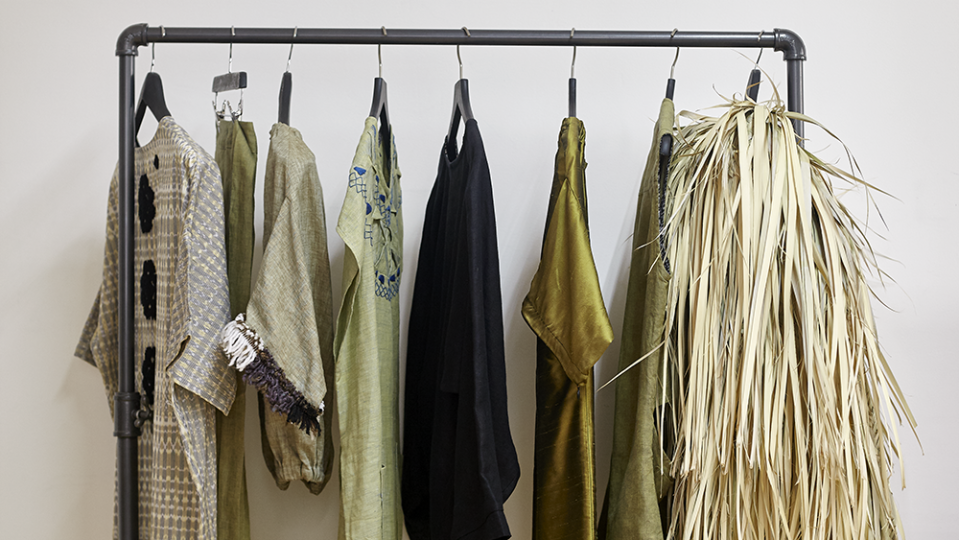
Fernández’s new showroom in a 19th-century building in the Juarez neighborhood of Mexico City encapsulates her style. Designed by her husband, artist Pedro Reyes, the interior is an homage to the city’s brutalism, with concrete blocks that reference pre-Hispanic writing. Here, she conducts workshops and offers artist residencies to accommodate growing interest in her work outside of Mexico. Last year, the Victoria & Albert Museum in London invited her to present a live fashion show, and Design Miami honored Fernández and Reyes with the Design Visionary award. An art historian by training, she is a social entrepreneur at heart. Her company received B-Corp certification, which confirms that her business practices have a positive impact on the community, the environment and customers.
Fernández always seeks inspiration from indigenous apparel and the craftsmen she works with: “I have always said the best fashion in Mexico is made in the mountains, the deserts and the jungles.”
Luteca
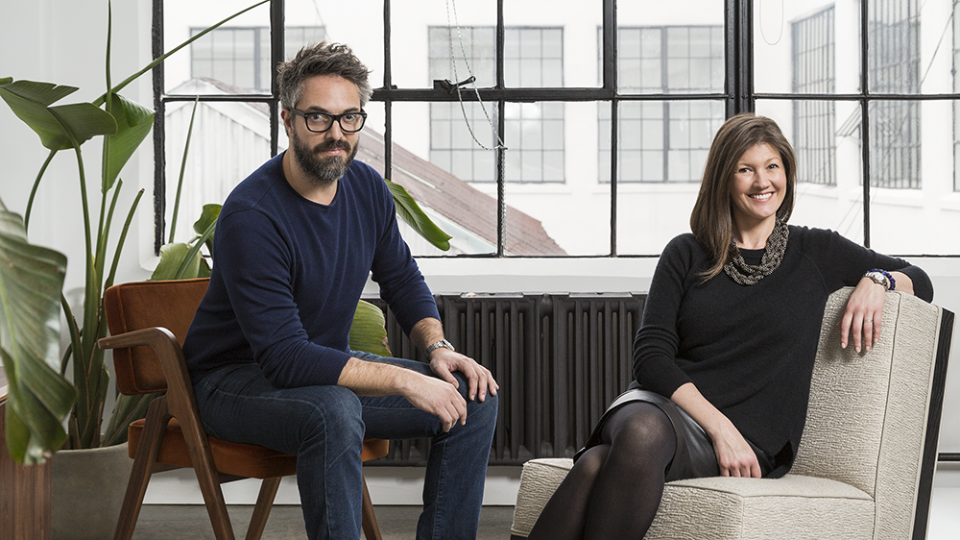
Amanda and Sebastian Reant weren’t looking to start a business. Amanda had a background in design and public relations. Sebastian worked in tech. But in 2014, when the couple first visited Mexico City, they were fascinated by its rich design history as well as the burgeoning contemporary scene. “The more we saw, the more we were astonished that Mexican design has often been overlooked in spite of its craftsmanship and beauty,” says Amanda.
That revelation launched Luteca, their New York–based furniture collection, the following year. The couple began by focusing on the city’s past: They’d visited the studio of the late Mexican architect Pedro Ramírez Vázquez, best known for his design of the monumental, brutalist National Museum of Anthropology, and eventually acquired the rights to reproduce his idiosyncratic, futuristic designs from the 1960s, such as a hexagonal coffee table rendered from a single piece of steel that was laser-cut, hand-bent and hand-polished. Next, they garnered rights for work by Bauhaus disciple Michael van Beuren, who designed and manufactured furniture in Mexico City during the 1930s and ’40s. Using the movement’s principles of clean, functional design, he created the Alacran, a woven low-slung chaise longue that won recognition at New York’s Museum of Modern Art Organic Design show in 1941.
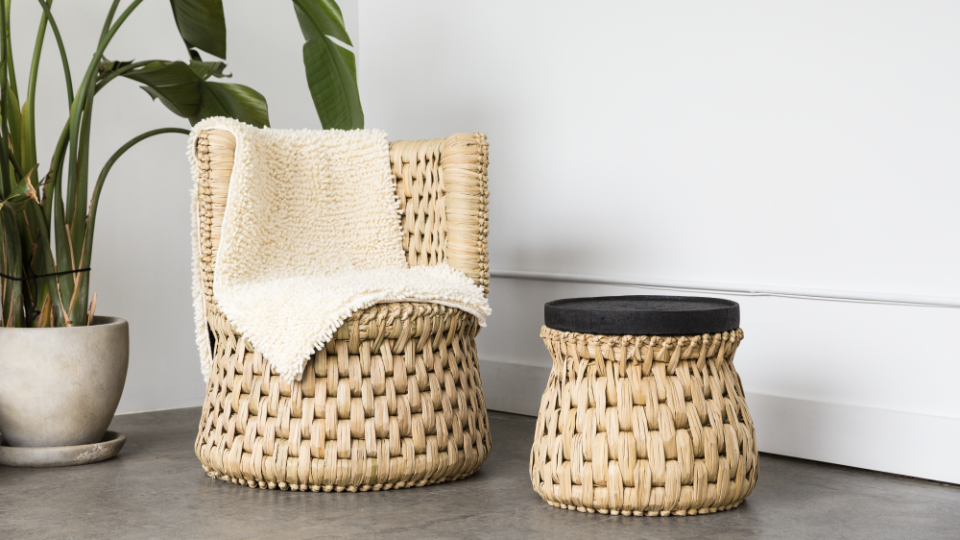
Luteca’s latest release is a curvy, ergonomic Butaque chair made of wood and hide by Cuban-born Clara Porset, who designed for Luis Barragán and Josef and Anni Albers. By honoring these legacy designers, the Reants have attracted the attention of a new generation of Mexicans, several of whom approached Luteca about representing them in the States. Says Amanda, “We wanted to highlight this incredible talent that’s been touched by the heritage of Mexico City architecture and design but who take that tradition and transform it into something that’s their own.” She points to Studio Martes, a French and Mexican team whose Kiin chair is a functional piece of minimalist sculpture.
Luteca came full circle when it opened a showroom last year in Mexico City. Says Sebastian, “We knew if we wanted to build a successful business, we’d have to build a bridge between Mexico and the US that expresses the ancestral feel of Mexico but with a modern point of view.”
Grupo Habita
When Grupo Habita opened the Habita Hotel nearly 20 years ago in the Polanco neighborhood of Mexico City, founders Carlos Couturier and Moisés Micha hired the local firm Ten Arquitectos to transform a nondescript 1950s building into a floating glass box. They wanted the design-driven boutique hotel to offer guests sophisticated interiors with a sleek European sensibility. Some 14 hotels later, their design ethos has changed, and Grupo Habita properties are now a gateway for tourists to experience firsthand the Mexican design renaissance. “When we started, we wanted to bring international design to Mexico,” says Couturier, the managing partner. “Now we want to make our guests aware of the rich creativity that’s here in Mexico and express pride in our design heritage.”
Grupo Habita shows off that heritage in bespoke amenities, including custom-built furniture made by community craftsmen, locally produced tableware and hand-made textiles, which give each property an authentic identity and sense of place. “With most of our projects, we’re looking to work with Mexican architects, industrial designers and artisans,” says Couturier. “We want the great textile from Chiapas or the perfect chair from Oaxaca.”
Even the hotel site selection evokes a savvy fusion of old skill and modern innovation. In Puebla, they hired noted architectural firm Legorreta + Legorreta to build La Purificadora, set in a former 19th-century water-purification factory. The historic structure remains intact, while the new building sweeps guests into the present with rooms showcasing cantilevered balconies. Stone and wood from the original building are integrated into the contemporary design. A sister property, set to open nearby this year, is in a 19th-century mansion, where architect Frida Escobedo is creating a wellness destination replete with a spa and pool incorporating volcanic rock from the area’s temperamental volcano, Popocatépetl.
As Grupo Habita continues to expand its portfolio—a new project in Oaxaca by famed architect Alberto Kalach will open this year, and its third US hotel, in downtown Los Angeles, is in the works—it’s targeting the arty crowd. One strategy: The company is a principal sponsor of Zona Maco, the biggest art fair in Latin America.
Couturier relishes the opportunity to expose Grupo Habita’s guests to a new Mexican aesthetic. “This generation of designers is very global in its point of view and has dynamic businesses,” he says. “In the past we didn’t see designers embracing our heritage in their choices. Now that they are, our guests are embracing it, too.”
Hector Esrawe

Hector Esrawe takes the concept of multitasking to a new level. A serial collaborator, he employs graphic designers, interior designers and architects at his Esrawe Studio and takes on branding and design projects as varied as coffee shops and furniture, private homes and museum exhibitions. “My philosophy is to embrace all these disciplines and collaborate,” he says, “so we are in a constant process of exploring the possibilities.”
His showroom in Mexico City’s Polanco neighborhood features his spare but slightly off-kilter furniture line in a gracious converted home, and his elegant public designs can be seen in projects such as Bar Auditorio, at the Auditorio Nacional, Mexico’s most important entertainment venue. There, his team covered a domed ceiling in copper ceramic tiles to dramatic effect. For a playful installation at the Denver Museum of Art, he enlisted Mexican weavers to create colorful chaises. When visitors sit and gently rock, the chairs chime.

“I’m always open to new paths, and I’ve always been intrigued by other disciplines,” Esrawe says. That curiosity led him to start Ewe Studio with Spaniard Manuel Bañó and Estonian-born Age Salajõe. Ewe Studio focuses on limited-edition pieces of decorative art rooted in Mexican craftsmanship. “We find the best artisans, then promote their traditions, and we’ve found an audience willing to pay the price.”
The pieces, available at Future Perfect in New York and Galerie Half in Los Angeles, are idiosyncratic marvels, as much sculpture as design. A table called Humo seems to defy gravity with an off-center base of Orizaba black marble and a wood top burned using a Japanese technique called yakisugi. When Esrawe started his career in the 1990s, he says, most designers were looking toward Italy and France for inspiration: “Now we’re in a renaissance moment in Mexico. We are proud of our history, and it has become contagious.”
Ezequiel Farca + Cristina Grappin
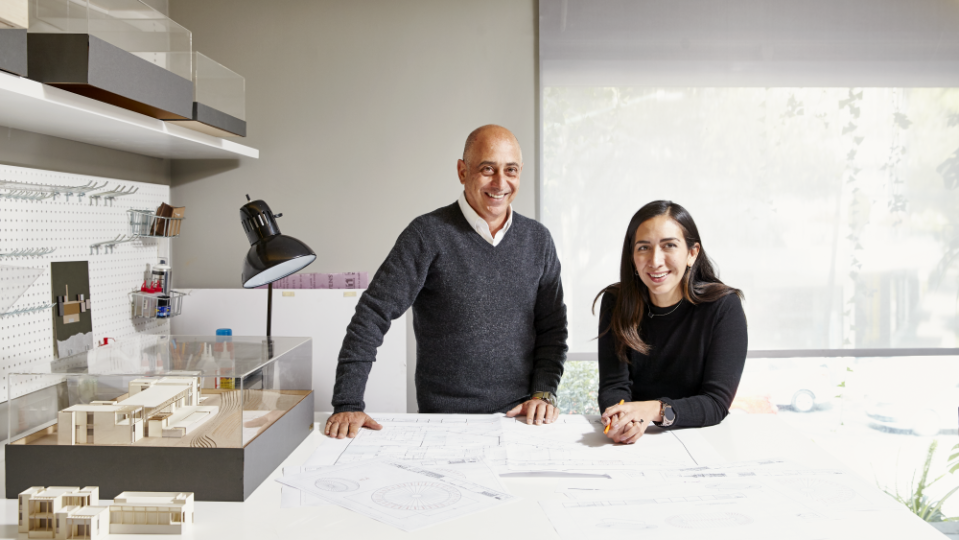
Native grasses and plants sprout from the facade of Ezequiel Farca and Cristina Grappin’s design studio in Mexico City’s Polanco neighborhood. The living green wall is an earthy nod to the holistic approach of their architecture practice, which not only prioritizes environmental sustainability but also takes pride in incorporating organic local materials, including volcanic stone, travertine and wood.
With additional offices in Los Angeles and Milan, the business partners—Farca is trained as an industrial designer, and Grappin is an architect—have been working together for eight years and have developed a multidisciplinary practice offering turn-key service for clients in Mexico, Europe and the US. This fall, Rizzoli will publish the monograph Ezequiel Farca + Cristina Grappin by Philip Jodidio, which will highlight such projects as a 20,000-square-foot vacation home in Los Cabos with an open-air floor plan that takes advantage of its ocean proximity, and Expendio Tradicion, a restaurant and mezcal bar ensconced in a historic building in Oaxaca with local black clay tiles and recycled mezcal barrels that reinforce the sense of place. The pair also design yacht interiors, including a recent project for Italian yacht-builder Benetti that features marble finishes and Paoli Lenti chairs.
“We want to enhance our clients’ lives by presenting design as a way of living,” explains Farca. “We look to Mexican vernacular architecture and apply those principles—analyzing sun and climate patterns—to our modern homes so we can design intelligent houses that are energy efficient and use gray-water systems and solar energy.” Everything is customized, from the millwork on handmade doors to bespoke furniture, wine cellars and screening rooms.
Like most creative professionals working in Mexico, Farca and Grappin enlist local craftsmen who use traditional methods to execute architectural and decorative elements. Talavera tiles updated with modern glazes and shapes—rectangles and diamonds rather than traditional squares— are fashioned with techniques established in the 16th century in the nearby city of Puebla; a slatted screen of coumarou wood provides dramatic lighting in a home entry; and latticed, sculptural teak screens bring the outside elements in while creating clever, spatial partitions. “We’re not interested in cold, contemporary spaces,” explains Grappin. “We’re looking for simplicity, the best way to use light and natural materials. We want to create warmth and a sense of place.”
Gloria Cortina
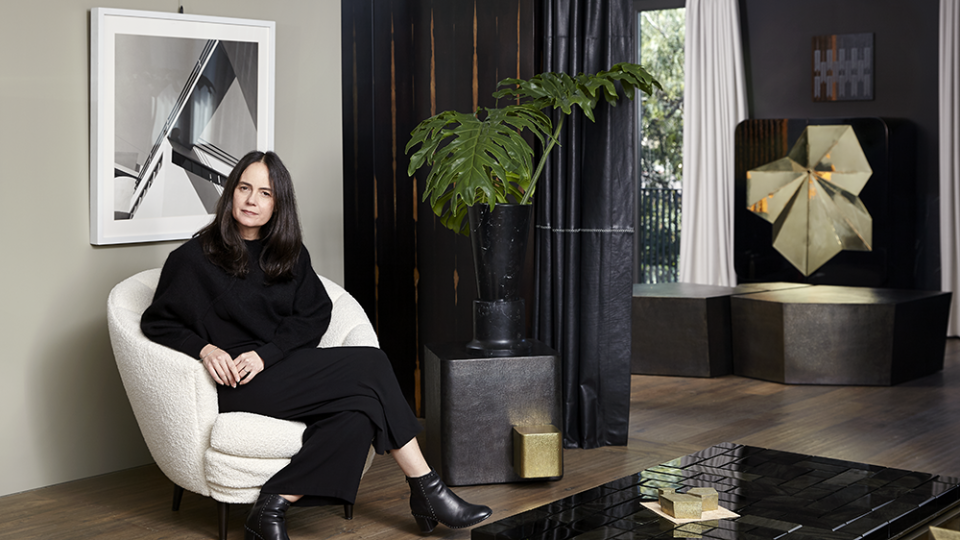
When Gloria Cortina grew frustrated looking for the perfect coffee table for her 1940s house—designed for her grandparents by famed decorator Arturo Pani in the smart Lomas de Chapultepec neighborhood of Mexico City—she did what any resourceful interior designer would do: She created her own. The result was a hand-hammered brass table comprised of three interchangeable parts. She describes it as an inverted, cracked pyramid, an homage to the German-born Mexico City artist Mathias Goeritz, who is known for his massive concrete sculptures and collaborations with Luis Barragán.
That table, which she makes in limited editions and is available at the Cristina Grajales Gallery in New York, inaugurated Cortina’s furniture line in 2014 and encapsulates her aesthetic. “In today’s Mexican design language there’s a complexity,” she explains. “For us it means pride in a combination of cultures—the European modernists who came to Mexico City, our Aztec roots, our pre-Columbian aesthetics—and we push them all forward into a more international, contemporary view.”
Cortina, who studied at Parsons School of Design in New York and worked for respected architects David Ling in New York and Ricardo Legoretta in Mexico, opened her own interior design studio in 2009. Clients in the US and Mexico engage her for sophisticated designs that are exercises in restrained luxury, with crisp lines and rich materials. A pair of obsidian, rose quartz and bronze sconces called Quiet Hummingbird, for instance, shine like jewels and reference ancient Mexican culture’s reverence for the small, elusive fluttering birds.
By taking her cues from both modern and pre-Hispanic influences, Cortina has landed in an enviable position as one of Mexico City’s most sought-after residential interior designers. She attributes the city’s creative momentum to the design community’s commitment to a new vernacular style. “We are nurturing our own language, taking the stage,” Cortina says. “And it’s thrilling.”
Sign up for Robb Report's Newsletter. For the latest news, follow us on Facebook, Twitter, and Instagram.

